South Florida may be the easiest place in the world to watch, or photograph, wildlife. As I'm sure my posts demonstrate, anyone can take good wildlife pictures in Florida. One of the consequences of this is that when I try to organize photos from any one of my visits there into a series of reasonably coherent blog entries, I end up with a lot left over. Our May 2014 visit was no exception, and this is a post devoted to its leftovers. That includes this portrait of the native Scarlet Hibiscus (Hibiscus coccineus) growing at the Pondhawk Natural Area in Boca Raton; I couldn't fit it in anywhere else.
So are Common Grackles (Quiscalus quiscula).
A White-winged Dove (Zenaida asiatica) drops by more or less every day.
Mammals in the back yard have even included, on one memorable occasion, an otter, but Eastern Grey Squirrels (Sciurus carolinensis) are far more likely.
This young Northern Mockingbird (Mimus polyglottos), begging for food on the back lawn, was obviously not long out of the nest.
Other than my mother's back yard, there are a number of more or less natural areas in the Boca Raton area. They include this bit of palmetto scrub; Eileen and I checked it out but didn't see very much (though it is supposed to hold Gopher Tortoises (Gopherus polyphemus), a species I continue to find elusive). I presume any tortoises in the area retreat into their burrows as soon as I decide to go looking for them.
Boca Raton is the home of the University of South Florida, and the campus is in turn host to some interesting open-country birds. These include increasingly-uncommon native species such as Loggerhead Shrike (Lanius ludovicianus)...
....and colorful exotics like this Nanday Parakeet (Aratinga nenday), a bird that by rights ought to be confined to its native range in South America.
Chiefly, though, the campus is a refuge for a colony of Burrowing Owls (Athene cunicularia). You're not allowed to disturb them, of course, but they are easily seen from the roadside. Just look for a little brown lump on top of a pole, surveying its surroundings with an expression of supercilious disdain.
One of the more productive natural areas in Boca is Pondhawk, though how much you can see there depends very much on how much water there is in its central pond. On our May 2014 visit it was pretty dry, but there was enough water in the canal bordering the area to draw in a few shorebirds. These are Least Sandpipers (Calidris minutilla), probably the commonest mud-haunting sandpiper in North America...
...and here, foraging near the sandpipers, is a Semipalmated Plover (Charadrius semipalmatus). This is the North American equivalent of the Ringed Plover (C. hiaticula) of the Old World; it owes its unlovely English (and Latin) name to its partially-webbed toes, one of the differences between the two species.
Even when dry, though, Pondhawk can be a good place for reptiles. I found this handsome Corn Snake (Elaphe guttata guttata) at the entrance.
The best places near Boca Raton to see, and photograph, the most wildlife with the least effort remain the Green Cay and Wakodahatchee Wetlands areas in Delray, with their permanent (and artificially-controlled) water levels and excellently-maintained boardwalks. To keep with reptiles for the moment, here are always American Alligators (Alligator mississipiensis) there.
Florida Soft-shelled Turtles (Apalone ferox) are common and easy to see as they swim around under the boardwalks.
This, though, was a surprise. Florida Red-bellied Turtles (Pseudemys nelsoni) are abundant at both refuges. This, however, is a Peninsula Cooter (Pseudemys peninsularis), a very similar species that I had never seen previously at either refuge. Notice the "hairpin" yellow markings behind the eyes, a distinct feature of this species. I knew that Peninsula Cooters were in the area (I had seen them before at the Daggerwing Nature Center in Boca Raton), but had always wondered why they seed to avoid Wakodahatchee and Green Cay (where I photographed this one). Well, here it is; has the species always been there, or was this a wanderer - perhaps a female looking for a place to lay her eggs?
Birds, of course, remain the most obvious animals of any size (other than strolling humans) that you can see from the boardwalks. They range from one of the largest North American birds, the Wood Stork (Mycteria americana)...
...to a variety of songbirds. Among the most obvious are male Red-winged Blackbirds (Agelaius phoeniceus) challenging rivals from a perch on the boardwalk handrails.
A fairly recent arrival, and one of the more spectacular birds in the area - especially in flight - is the Black-bellied Whistling-duck (Dendrocygna autumnalis).
Anhingas (Anhinga anhinga) are diligent and expert fish-catchers. An Anhinga's biggest problem, after successfully spearing a fish with its bill, is transferring it, headfirst, from bill to throat - an action usually accomplished with a toss of the head and an expert catch.
Double-crested Cormorants (Phalacrocorax auritus) are probably the most maligned birds in North America (I have seen them referred to as 'feathered rats', among other things), but an adult, with glossy black plumage, bright orange throat skin and piercing blue eyes, is a lovely creature.
For sheer glamour, of course, even the cormorant can't beat the Purple Gallinule (Porphyrio martinicus).
Purple Gallinules are largely vegetarian. At Wakodahatchee they are particularly fond of the budding flower heads of Fireflag (Thalia geniculata), and will go to considerable lengths to get them (for a rail, they seem remarkably agile).
Dominating the water-bird fauna, of course, are the herons. The upper photo is of a fully-fledged immature Cattle Egret (Bubulcus ibis), with an adult in breeding plumage below it. Cattle Egrets are so abundant in Florida that it is hard to believe that up until the 1950s they were completely unknown here. The Cattle Egret is one of the comparatively rare cases of a recent natural arrival (apparently from Africa by a South America, where birds first appeared earlier in the 20th century).
Great Blue Herons (Ardea herodias), the largest heron in the area, are also the least exotic (for a Canadian birder) as their range extends well north of the border.
However, in Ontario – where the birds tend to nest at the tops of tall trees – you rarely have a chance to get an eye-level view of a recently-fledged bird, like this one.
Despite its name, the Little Blue Heron (Egretta caerulea) is actually closer to the egrets, and although adults like this one live up to their name, their immatures are white.
Certainly the most exciting heron on the wetlands is also, oddly enough, the smallest of the lot: the Least Bittern (Ixobrychus exilis). Least Bitterns are notoriously shy creatures, although like so many other birds is much easier to get on close terms with them in South Florida than in the northern parts of their range. A sighting of a Least Bittern in Canada is a red-letter occasion, but here – though they are still skulkers – they are much easier to see.
In fact, you can get very close to them, though you may have to peer carefully into the reeds to do so.
Least Bitterns even nest close to the boardwalk at Green Cay. Many birders even get to see their downy young following their parents about, though I have never had the good fortune to do so.
However, to come back to the point I made at the beginning of this posting, these photos of a Least Bittern on the nest may be the best proof I have that anyone in South Florida can be a good wildlife photographer. There can't be many places where you can get photographs like this without having to resort to a blind and outfit yourself with a pair of hip waders. All you have to do at Green Cay is to lean over the boardwalk rail, point your camera, and click the shutter.
















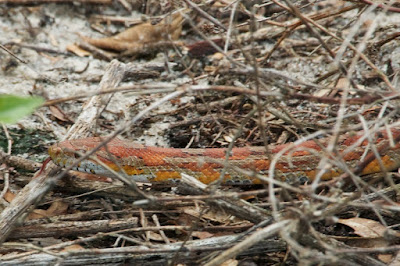





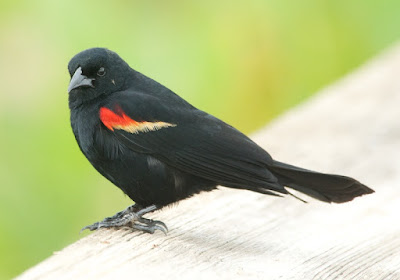


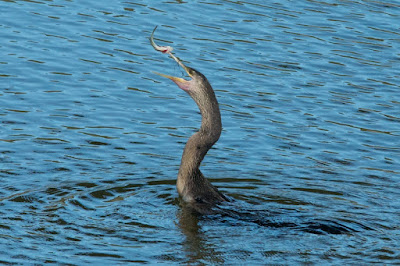





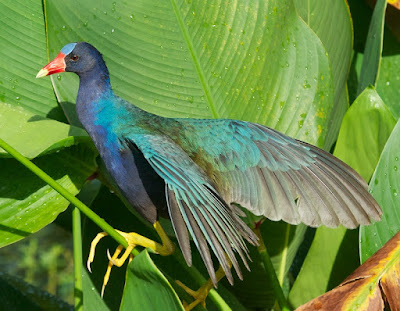













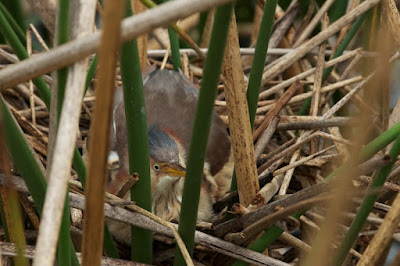


No comments:
Post a Comment